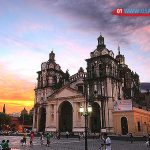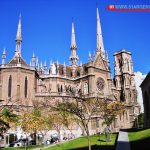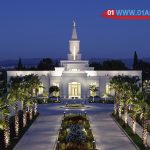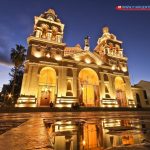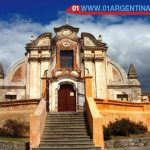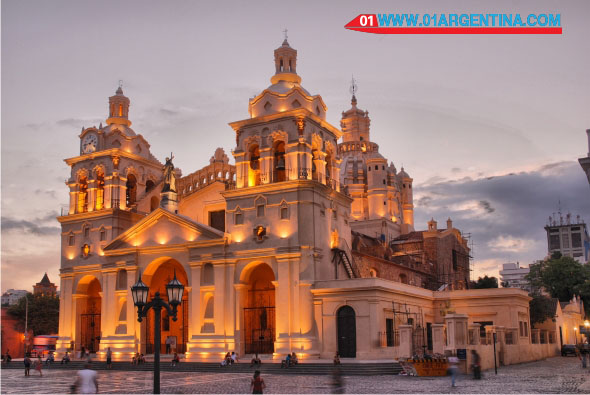 Cordoba is an important cultural, economic, educational, financial and entertainment center. Sometimes abbreviated Cordoba, it is also known as La Docta. Founded on July 6, 1573 by Don Jerónimo Luis de Cabrera and owner of a rich history, the city of Cordoba is one of the destinations chosen by thousands of tourists coming from all over the country and abroad. Nowadays Cordoba city offers beautiful excursions to the hills.
Cordoba is an important cultural, economic, educational, financial and entertainment center. Sometimes abbreviated Cordoba, it is also known as La Docta. Founded on July 6, 1573 by Don Jerónimo Luis de Cabrera and owner of a rich history, the city of Cordoba is one of the destinations chosen by thousands of tourists coming from all over the country and abroad. Nowadays Cordoba city offers beautiful excursions to the hills.
Its privileged location in the center of Argentina at the foot of the mountains, its rich history linked to the major milestones of the past, its cultural life, a bustling economic activity and an unquestioned educational center internationally, makes the city of Córdoba a quality destination.
Due to its geographical position and its infrastructure is a major air and ground node communications, both national and international. It has more than 1,300,000 inhabitants and is considered the second largest city in the country.
Cordoba is also a major recipient of college students across the country and the world. Its university, founded in 1613, is the first of Argentina and the fourth oldest of America. It is considered one of the most important of the continent to attend Mass one hundred thousand students.
In addition, the Cordovan capital is home to numerous conferences, conventions and meetings that take place throughout the year in different spaces intended solely for that purpose.
It offers visitors an extensive network of services, first class hotel, a shopping area in the city center, large shopping centers, several hypermarkets, modern cinemas and a wide variety of cultural and sports activities.
Anyone visiting the city of Cordoba, will tour its historic center through the first pedestrian area of the country, discover gems of colonial architecture and take walks of singular beauty that will make your stay an unforgettable experience.
In the center of the country, at the foot of the mountains and lying on a plain, Córdoba, city of mergers rises. flowery streets, hospitality and particular emphasis combine with ancient walls, añosas traditions and noisy student life. cosmopolitan city, the most modern technology, fashion, design and art, with its hotels, restaurants, fairgrounds, shopping centers and recreational areas complement urban tourism that reaches the highest levels of demand and quality.
Accessibility
The Department of Tourism of the Municipality has translated brochures Historical Center in Braille, available at the tourist information center of the Cabildo. It also can be purchased at the office a list of restaurants have their menus in Braille and celiac. For its part, the Cabildo, the Cathedral and the Bishop Market, part of the circuit Historical Center, have plates with reviews translated in Braille and Area staff has been trained guides for guided tours.
Soon, it will be available on a map haptic, a plan of the historic center adapted for visually impaired people where, by touch, may know the locations of various resources located in the city center.
Also it is planning the installation of a computer program called JAWS, which reads aloud everything that appears on the computer screen.
Finally, it is forming a manual with general information about the city, museums information, climate, flora, fauna, currency, etc., translated into Braille and audio information that will be available at the tourist information office Cabildo.
Cultural Córdoba
Cordoba city combines modernity and tradition, provides an insight into the social, cultural and religious history of the country and marvel at the visible effects of economic development and modernization that transformed Cordoba in a gifted metropolitan city with the best services and an important cultural heritage manifest in churches, museums, cinemas and theater, craft fairs, cultural centers, antique shops and art galleries spread over the city.
The value of the Cordovan cultural treasure has been recognized by the UNESCO to declare the Jesuit Block, a World Heritage Site in 2000 and by the governmental organization American Capital of Culture by selecting it in 2006. Both awards speak of the commitment of a city dedicated to creativity, knowledge, cooperation, inclusion, diversity and integration with other cities, as dreamed its founder, Jerome Luis de Cabrera, on July 6, 1573.
Religious Cordoba – Jesuit Block
The Jesuits, the Order of the Society of Jesus founded by St. Ignatius Loyola, were responsible for the construction of one of the most important works in South America. His steely conviction educational and evangelizing mission bequeathed to the city of Cordoba one of the oldest universities in the region, which earned him forever the name of “the Learned”.
Jesuit Block or Manzana de las Luces, located in the square formed by the Caseros streets Bishop Trejo, Velez Sarsfield and Duarte Quirós of the Mediterranean capital, shows part of the work considered since 2000 by UNESCO World Heritage in Argentina. Here we visit one of the oldest churches in the country, the Church of the Society of Jesus, 1761, made with local materials with simple architecture, which contrasts with the interior instead. There you can see all wealth in the details as the wooden dome without metal studs, the delicate work of the high altar and ceiling. On the pedestrian street Caseros you can visit the Chapel Domestic private use of parents, created in 1644. It has a vault armed with canes tacuaras together with leather thongs, covered with paintings that reflect the religious meaning of the Order .
Beside the main church, the pedestrian Obispo Trejo, is the Museum of the University. The courtyard of what is now known as the Rector of the National University of Cordoba, has a cloistered format surrounded by galleries, which highlights the statue of Bishop Fray Fernando Fernando de Trejo and Sanabria center and the Graduate Hall on a the galleries. There doctoral theses presented and is currently protocolar place. Bookstore Jesuítica has old copies of historical jesutíca library. Already in the corner of Obispo Trejo and Duarte Quirós, ranks the current Monserrat National College, founded in 1687 thanks to the priest Ignacio Duarte Quirós who donated his property. The facade is the work of architect Jaime Rock in 1927.
At this historic block, the Jesuit stays that form the heritage set in all Cordoba are added.
Cordoba lives
Its multiple outdoor spaces, its beautiful parks of native and exotic vegetation, or the comfort of shopping centers, shopping malls and craft fairs, position Cordoba as the best option for rest and recreation family. Live shows from established artists, cinemas and theaters, perfectly assembled with the sporting activities, guided walks and craft fairs. Children will have lots of opportunities to enjoy activities designed for them, plays, music, recreational games, free play areas in the numerous parks and city squares and all the colorful art in the cultural centers. The varied nightlife distinguished gastronomic proposal or the charm of traditional dishes and international cuisine complete the local offer for the entertainment of children, youth and adults.

